Best Neighborhoods in Ottawa: A Guide to Top Residential Areas & Livability
Ottawa’s neighborhood scene feels like a series of small towns in a capital city. After helping countless families and professionals find their perfect match in the town, we’ve discovered that each district offers its distinct personality – from the historic charm of the Glebe to the family-friendly suburbs of Barrhaven to the urban energy of Centretown.
What makes Ottawa unique is how dramatically different life can be depending on your chosen neighborhood. A 15-minute drive can transport you from French-speaking communities with European vibes to English-speaking suburbs with expansive yards or waterfront properties along the Ottawa River to vibrant urban cores with coffee shops and boutiques on every corner. The city truly offers something for every lifestyle preference and budget.
This guide breaks down Ottawa’s best neighborhoods based on what matters – commute times, housing prices, school quality, walkability, and community feel. We’ve skipped the tourist brochure descriptions and instead focused on the practical information you need to find your perfect match in Canada’s capital.
Whether you prioritize affordability, nightlife, family amenities, or language immersion, we’ll help you narrow down which Ottawa neighborhoods deserve a spot on your shortlist.
Best Neighborhoods in Ottawa: Our Neighborhood Assessment Framework
To identify Ottawa’s most livable neighborhoods, we evaluated residential areas using comprehensive criteria that matter to both new arrivals and long-time residents. Our approach combines quantitative data with qualitative insights gathered from locals, creating a more nuanced picture than typical neighborhood guides.
Our assessment framework examines multiple factors that impact daily quality of life, including:
- Employment Access: Proximity to major employers and job centers, including government offices, tech hubs, and healthcare institutions
- Healthcare Facilities: Availability of clinics, hospitals, and specialists within a reasonable distance
- Safety Metrics: Crime statistics and community policing presence
- Seasonal Livability: How the neighborhood functions during Ottawa’s distinct seasons, particularly winter
- Housing Diversity: Range of housing types and price points of short-term rental apartments for short stays
- Investment Potential: Historical value appreciation and development trends
- Transportation Options: Public transit accessibility, walkability scores, and commute times
- Amenities & Attractions: Parks, restaurants, shopping, and cultural venues
Based on these evaluations, we’ve identified the following neighborhoods as Ottawa’s standouts:
- The Glebe
- ByWard Market
- Westboro
- Hintonburg/Wellington West
- Sandy Hill
- Kanata
1. The Glebe (Le Glèbe French): Urban Village Excellence
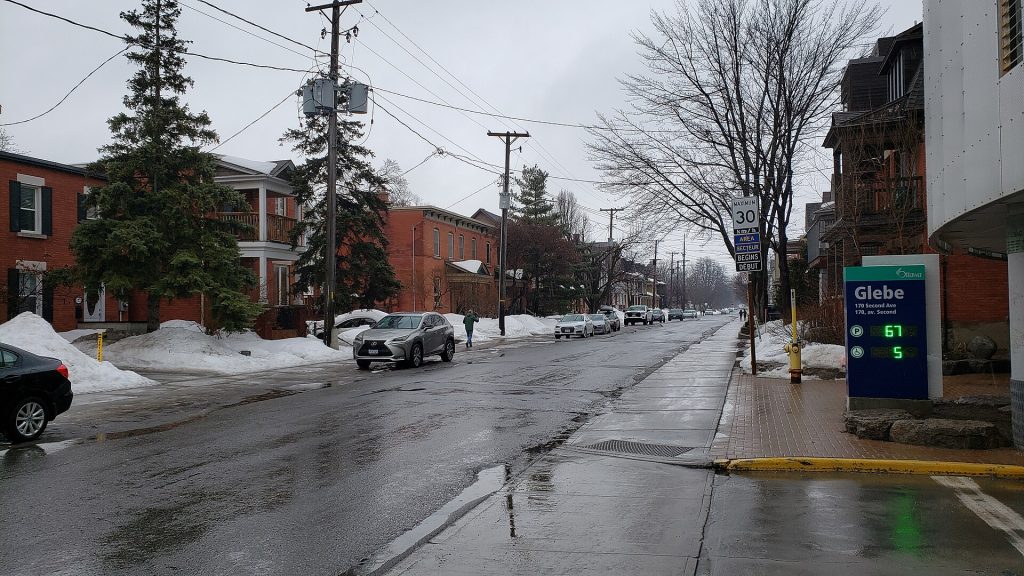
The Glebe is a historic neighborhood in Ottawa known as one of the city’s most walkable enclaves. It’s a compact, pedestrian-friendly place where residents get around on foot. The Glebe has quality pedestrian infrastructure, featuring sidewalks lined with trees and well-maintained streets. Strolling to the amenities is a pleasant experience!
Bank Street is the center of commercial activities in the neighborhood. The vibrant street features shops, cozy cafes, charming restaurants, bakeries, and some iconic spots. The Glebe pulses with activities year-round, with Lansdowne Park featuring a farmer’s market, sports at TD Place, and a cinema.
It maintains the urban village charm with green spaces. It’s near the Rideau Canal, which offers visually aesthetic paths for walking, cycling, or skating in winter. Patterson Creek and Central Park are places where residents go to have fun and unwind.
Housing reflects The Glebe’s heritage and diversity. From red-brick Victorian homes to century-old row houses and modern structures, the architectural diversity makes it a scenic area with a timeless feel. Community engagement thrives in this area. For instance, the Glebe Community Association drives local causes such as heritage preservation.
Events like the Great Glebe Garage Sale (an annual fundraiser) bring unity among residents. Families, professionals, and retirees thrive in this Neighborhood. Short-term rental apartments are a great housing option for staying in the Glebe.
2. ByWard Market: Historic Core Vitality
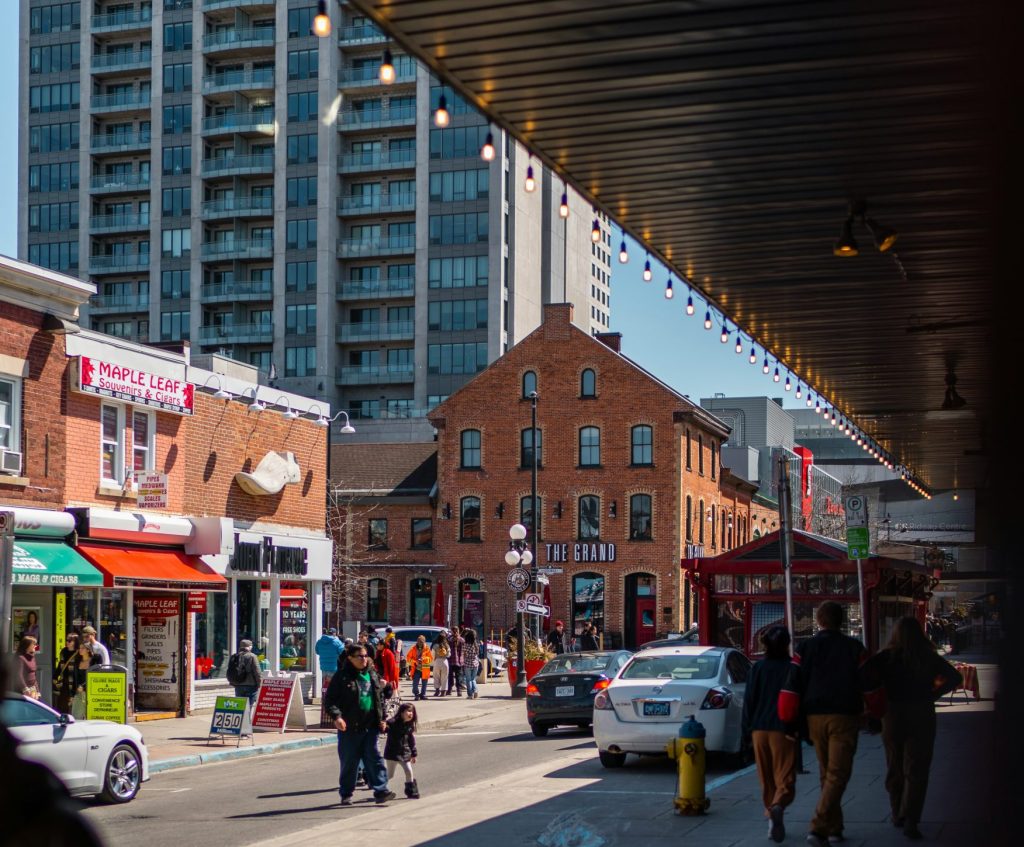
Located downtown, close to the Rideau Canal, ByWard Market is a historic hub buzzing with activities day and night. It properly blends its heritage environment with the vibrancy of modern city life. ByWard Market is a 19th-century district that thrives as one of Ottawa’s commercial and cultural hubs.
During the day, the market pulses with farmers’ stands and artisans, while the night is characterized by a lively nightlife scene – bars and music venues. Heritage preservation is a core value in ByWard. Cobblestone streets and century-old structures show that the area takes heritage preservation seriously.
Tourism and residential life coexist seamlessly. Historic landmarks like the Notre Dame Basilica and the nearby Parliament Hill draw tourists, while locals socialize alongside them. This tourism-residential coexistence is beautiful, but issues with parking and crowds occasionally test the balance.
ByWard Market offers a diverse, global culinary scene. The neighborhood reflects Ottawa’s multicultural makeup, from Lebanese shawarma to French pastries and Canadian delicacies. Market authenticity measures are taken to keep everything genuine. The ByWard Market District Authority (BMDA) oversees vendors, preserving the district’s core values.
The night-residential balance is interesting. Pubs like Heart & Crown draw late-night revelers, causing noise pollution and testing the tolerance of people nearby. Appropriate authorities are available to remedy this limitation. Explore Corporate Stays’ heritage-integrated accommodations with modern amenities.
3. Westboro: Lifestyle Optimization Zone
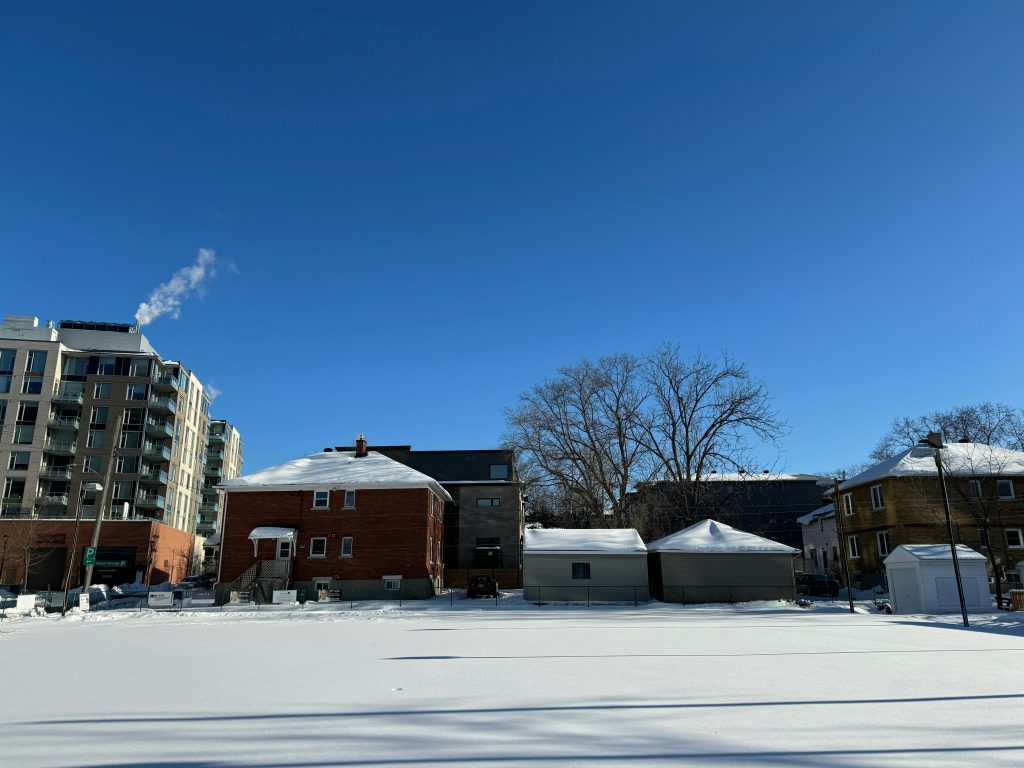
Westboro is one of the best neighborhoods in Ottawa, with lively streets and access to recreational spots. Located along the Ottawa River, the area has Westboro Beach, where swimmers and picnickers go to have fun. The Sir John A. Macdonald Parkway and nearby trails make biking, jogging, skiing, and other outdoor activities possible year-round.
Independent business sustainability thrives along Richmond Road, the neighborhood’s commercial center. It’s home to many local businesses, and business owners on Richmond Road do well due to heavy pedestrian traffic and a community that supports local businesses.
There is top-tier cyclist infrastructure, which features dedicated lanes along Richmond Road and riverside routes, connected to Ottawa’s broader bike network. Many bike racks and trailheads increase the ease of commuting. However, pedestrian movement during peak hours can complicate commutes.
The housing landscape in Westboro is diverse, evolving from early 20th-century cottages and post-war homes to renovated heritage structures, sleek infills, and modern condos. The properties are close to family-friendly amenities.
For instance, Dovercourt Recreation Centre offers pools, sports, and kids’ programs. There are also good schools (like Churchill Alternative) and parks (like Hampton Park).
It is a great place to raise a family. For your housing needs, look at Corporate Stays’ properties, which offer modern lifestyle amenities.
4. Hintonburg/Wellington West: Creative Corridor Development
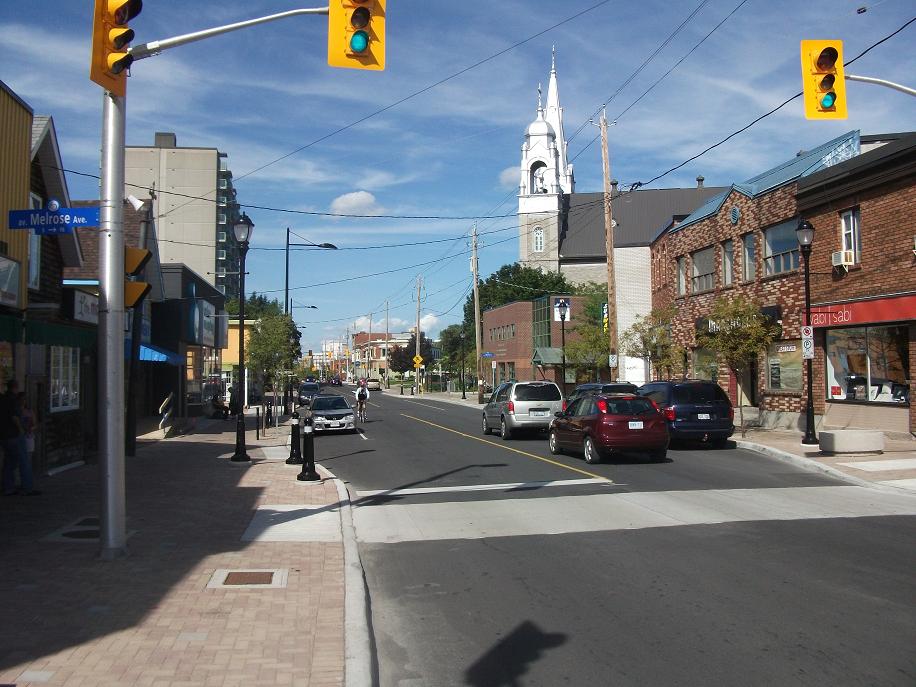
Hintonburg/Wellington West is a fast-developing neighborhood with a lively art scene. It has Quartier des Artistes (QUAD), featuring galleries, studios, and events like ArtsPark. The neighborhood’s culture is characterized by public art displays, like The Wellington Marbles, festivals, and iconic venues (like the Great Canadian Theatre Company).
The neighborhood is doing great work balancing community preservation and rapid gentrification. Over the years, the area has experienced a swift transformation, as seen in property upgrades and rising affluence. That said, there are preservation initiatives (like ArtsPark & heritage sites) that help maintain cultural roots.
Wellington Street West has a diverse culinary scene. The area boasts an extensive cluster of eateries and Independent coffee shops. Its gastronomic diversity includes options like Vietnamese pho and Mexican tacos, showcasing the neighborhood’s evolving food culture.
The annual housing value growth is 3%, fueled by rapid gentrification. The neighborhood’s growing art scene enhances desirability, so it’s projected to be a strong investment destination.
Excellent transit connectivity to key employment centers exists. The nearby O-Train’s Bayview Station (Line 1) and Tunney’s Pasture Station directly connect to downtown Ottawa (government and corporate hub). Bus routes along Wellington Street West connect to Kanata (tech hub) and Tunney’s Pasture (availability of federal employment). It’s a transit-rich area that connects residents to the city’s economic centers.
If you’re considering living in this emerging creative hub, check out Corporate Stays’ design-forward, artistic accommodations.
5. Sandy Hill: Academic-Residential Synergy
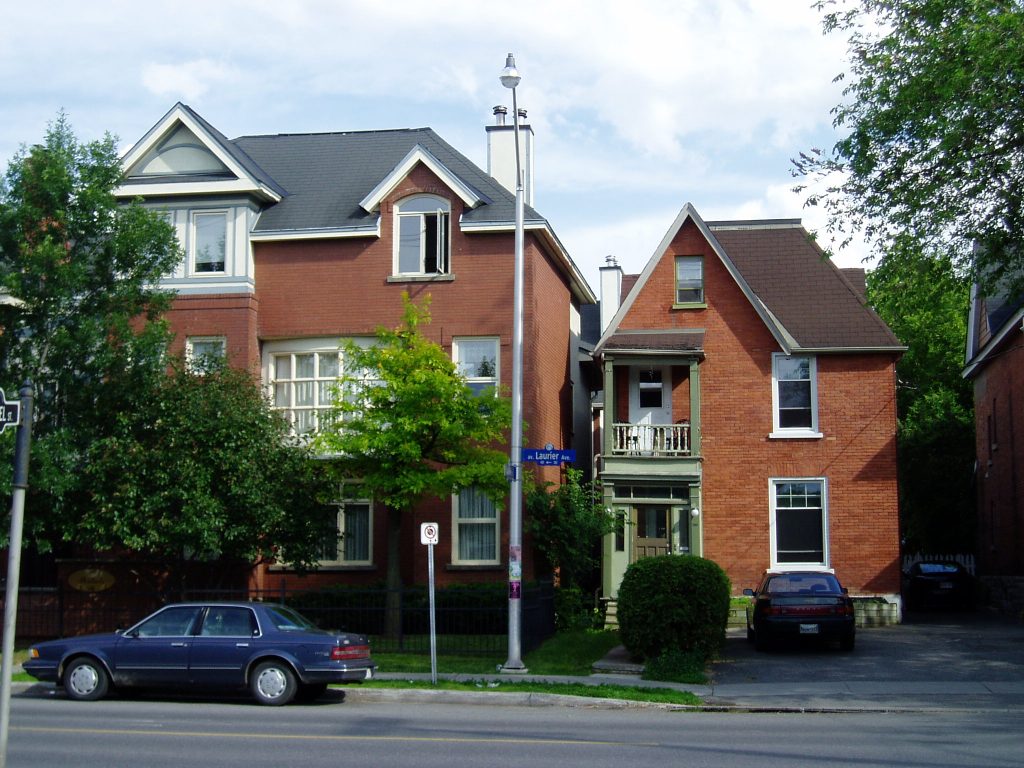
Sandy Hill is one of Ottawa’s best neighborhoods. It thrives due to its closeness to the University of Ottawa. As a result, it’s a dynamic intellectual hub that blends intellectual capital with the neighborhood’s vibrant urban makeup.
Academics, students, and professionals live in Sandy Hill, which is easily accessible to the campus. Walking down the streets, you’ll notice diverse languages and cuisines. As a top destination for international students, Sandy Hill is culturally diverse and has facilities (like co-ops and parks) that promote inclusivity.
The enclave is of great historical significance as a 19th-century elite area, home to lumber barons and notable prime ministers. Its grand heritage homes reflect Victorian and Edwardian architecture.
Preservation measures include the Sandy Hill West Heritage Conservation District, which was established to maintain the neighborhood’s historic aura. Laurier House National Historic Site and All Saints Anglican Church are examples of landmarks in Sandy Hill.
Due to its heavy student population, there is a delicate student-resident balance. Long-term residents (families and professionals) maintain community stability. There are local associations that bolster cohesion and address the unique challenges that face student-populated areas.
It strikes a balance between affordability and urban appeal. The median rent is $1,782, 17% below the national average. Diverse housing options are available, including co-ops and student rentals.
6. Kanata: Tech Corridor & Residential Integration
Kanata is also a great option as it is a hub of innovation and employment opportunities. Kanata North hosts Canada’s largest technology park. The neighborhood has many companies, including known tech giants like Skyworks Solutions, Mitel, and Solink. The tech hub supports thousands of jobs.
In Kanata, the suburban serene environment is balanced with urban amenities. Residents enjoy fun activities, including shopping, dining, NHL games, and concerts. Vast green spaces (like Walter Baker Park) and trails offer a variety of outdoor activities.
The neighborhood has good infrastructure for families. From top schools to Kanata recreation centers, parks, and libraries, Kanata delivers a high quality of life. In addition, the area has low crime rates and relatively affordable housing.
Kanata offers a good housing value proposition compared to Ottawa’s urban core. For example, the average rent for a short-term rental apartment is about $2,000, while the average home purchase price is around $650,000.
You can rely on our tech-corridor properties with remote work optimization for your accommodation needs. Having discussed the best neighborhoods in Ottawa, let’s look at the key rising areas in the city.
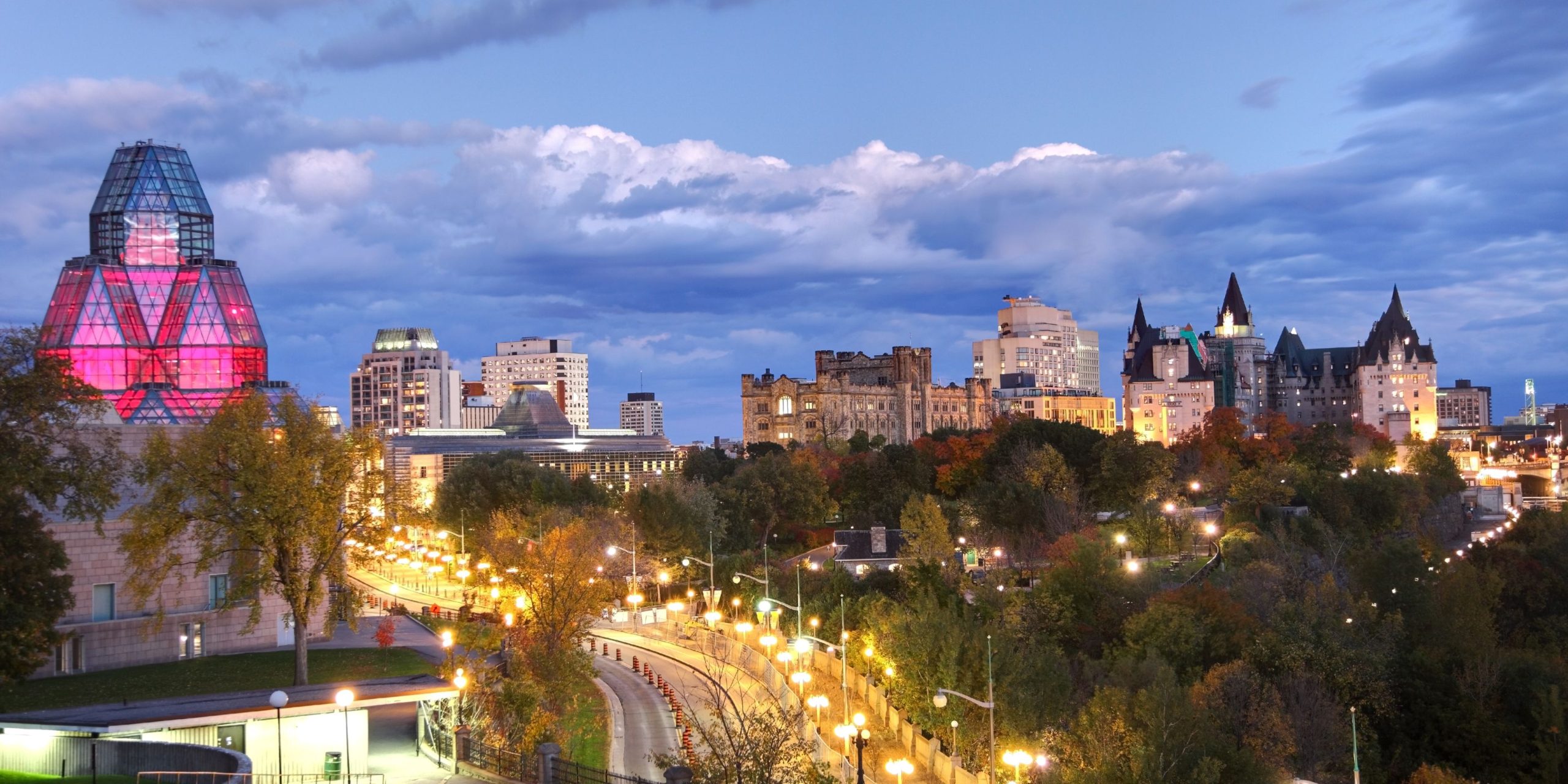
Best Emerging Neighborhoods in Ottawa
- Mechanicsville: Bordered by the Ottawa River, it’s reintegrating its waterfront, leveraging efforts driven by community groups, like the preservation of Lazy Bay Commons. With a mix of new structures, historic homes, and green spaces, Mechanicsville has an urban-suburban feel.
- Vanier: Once industrial, this evolving bilingual enclave blends affordability with diversity. Its revitalized Beechwood Avenue features shops, cafes, and community events, while some attractions like Richelieu Vanier Park point to its promising resurgence.
- Little Italy: Located on Preston Street in Ottawa, Little Italy is emerging as a lively urban village. While it’s evolving with new shops and condos, it maintains its Italian heritage through cultural preservation, showcased in annual festivals (like Italian Week) and long-lived family-run eateries.
- Centretown West: Once industrial, this emerging area is now busy with new condos and cafes, attracting more residents. Centretown is rising as a well-connected urban hub with affordable rents and walkable streets.
- Lebreton Flats: This rising neighborhood is evolving into a busy, transit-oriented community. It has a bold development trajectory. With over 900 housing units and a potential Senators arena, Lebreton Flats has promising investment potential.
We’re following development trends in Ottawa, with strategic positioning in emerging high-potential zones and a good understanding of Ottawa’s rental neighborhoods. If you’re looking to get accommodation in any rising enclave, we can lend a helping hand.
Accommodation Ecosystem Analysis
- Housing Typology Distribution Patterns: Ottawa’s housing typology reflects urban-suburban diversity across neighborhoods. The city features heritage homes, single-detached homes, mid-rise apartments, townhouses, low-rise infills, high-rise condos, co-ops, and student rentals.
- Rental Market Dynamics and Regulatory Considerations: Demand is outpacing supply due to population growth and homeownership challenges. Rental market forces drive the average rent to around $2,214.
Regulatory considerations include Ontario’s 2.5% rent increase cap for 2025, which protects tenants (in pre-2018 units) from inconsiderate rent hikes. However, newer properties are exempted, allowing rent increases to be determined by the market.
- Price per square meter: Housing costs vary widely by neighborhood, type of property, and market forces. The average price per square meter in Ottawa is around $6,500.
- Short-Term Accommodation Regulatory Environment: The city’s short-term accommodation regulations follow By-law 2021-104.
It mandates permits for rentals under 30 days, restricting them to principal residences. Owners are required to pay a 5% Municipal Accommodation Tax and secure $1 million liability insurance. Contact a property attorney to learn more about this or before making any decisions.
- Investment Potential Trajectories in Ottawa’s Best Neighborhoods:
Ottawa Neighborhood Comparison Based on Housing Value Growth
| Neighborhood | Value Growth (Annually) | Driving Factor |
| Westboro | 2.6% | Urban appeal and proximity to downtown |
| The Glebe | 2.9% | Urban appeal and proximity to downtown |
| Kanata | 4.1% | Growing tech hub |
| Sandy Hill | 3% | Proximity to the University of Ottawa |
| ByWard Market | 3.1% | Central location, tourist appeal, and closeness to downtown |
| Hintonburg/Wellington West | 3% | Artsy vibe and proximity to downtown |
With our unique positioning at the intersection of short-term rentals in Ottawa and residential-quality housing, we’ve got a variety of property portfolios across diverse neighborhood contexts. You can rely on Corporate Stays to get a good deal.
Practical Considerations for Neighborhood Selection
- Proximity to downtown: If you work with government institutions, choose a neighborhood close to downtown, the government’s seat.
- Multi-Modal Transportation: Ease of commuting is a leading factor to consider. Choose a neighborhood with a multi-modal transit system and short commute times.
- Seasonality Factors: The major seasons are warm, humid summer and harsh winter. Winter livability is a critical factor to consider. Check weather conditions across neighborhoods and make your choice based on your findings.
Well, Corporate Stays has got you covered! We provide winter-ready accommodations equipped with modern amenities.
- Remote Work Infrastructure: Do you work from home? Look out for a neighborhood with remote work infrastructure like co-working spaces.
- Investment Potential: As seen in the table above, housing investment potential varies across neighborhoods. A thorough Ottawa neighborhood comparison can help you find the neighborhood with the best offers.
- Cultural Integration: Some areas are bilingual, while some neighborhoods have more immigrants than others. Consider the ease of integrating culturally. For example, if you speak French, you’ll thrive better in a French-speaking enclave.
Corporate Stays offers neighborhood-specific welcome guides for seamless local integration. The company provides bilingual services, so language isn’t a barrier!
Final Thoughts
Ottawa is Canada’s capital city, with great neighborhoods and a high standard of living. The best neighborhoods in Ottawa include Westboro, The Glebe, Sandy Hill, Kanata, ByWard Market, and Hintonburg/Wellington West. The most suitable neighborhood for you depends on your needs and the area that caters to them.
With our years of operational experience in Ottawa, relationships with neighborhood business associations, and neighborhood-specific welcome guides, we can help you pick the right neighborhood to live in.
For your accommodation, we’ve got you back! Explore Corporate Stays’ available Short-term rentals in Ottawa and residential accommodations in your preferred neighborhoods. Sign up for our neighborhood-specific property alerts and updates to stay ahead of the curve.